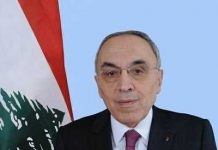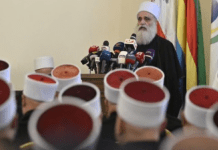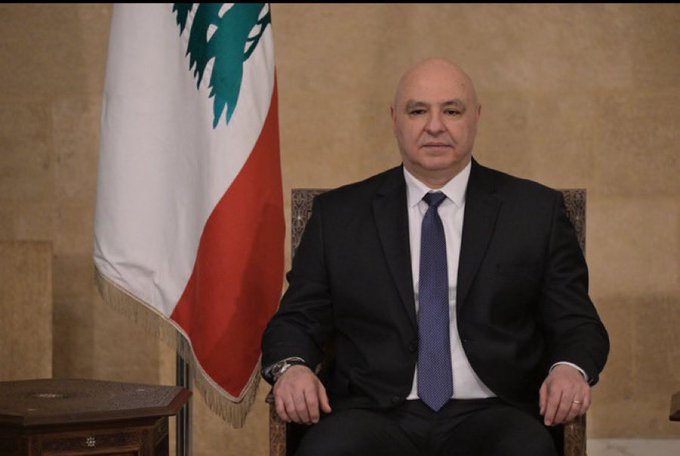The Real Face of Rafsanjani
NCRI/Tuesday, 10 January 2017
Iran after Rafsanjani
Dying at the age of 82 from a heart attack on Sunday, former Iranian president Ali Akbar Hashemi Rafsanjani had a long record of guiding the regime’s lethal measures domestically and abroad, including suicide bombings and eliminating exiled dissidents. Such an image is far from the “moderate” that Western media found in him. Wrote Amir Basiri in the ‘American Thinker’ on January 10, 2017, the article continues as follows.
Rafsanjani was known for his central role in Iranian politics. From the 1979 revolution forward, he placed himself amongst the inner circle of regime founder and first supreme leader Ruhollah Khomeini. He served as the regime’s parliamentary speaker in the 1980s, while in parallel acted as Khomeini’s envoy to supervise operations in the Iran-Iraq War.
As Khomeini died and the war wound down, Rafsanjani assumed the mantle of presidency in 1989 and played a significant part in Ali Khamenei’s rise as Khomeini’s successor. Rafsanjani continued his political life by chairing the Assembly of Experts — in charge of appointing the supreme leader and acting as an oversight body over his role — and move on to the Expediency Council before his death, both advising Khamenei and finalizing conflicts between the ultra-conservative Guardian Council and the parliament.
Following eight years of Mohammad Khatami’s presidency, in 2005 Rafsanjani made an effort to reclaim this position. This campaign ended in humiliation as Mahmoud Ahmadinejad assumed the presidency. For the next eight years Rafsanjani publicly criticized and denounced Ahmadinejad’s policies and actions, distancing himself from the hardliners and further attempting to portray himself as a “reformist” favoring warm relations with the West.
Despite serious differences and rivalry over power and influence, Khamenei fully comprehended his need for Rafsanjani as a stabilizing factor and could never fully eliminate him. Rafsanjani’s death is now evaluated as the loss of a significant pillar for the entire regime, as explained by Iranian opposition leader Maryam Rajavi, president of the National Council of Resistance of Iran (NCRI).
Rajavi declared in a statement on Sunday defining Rafsanjani’s death as the downfall of “one of the two pillars and key to the equilibrium of the religious fascism ruling Iran.”
“Rafsanjani, who had always been the regime’s number two, acted as its balancing factor and played a decisive role in its preservation. Now, the regime will lose its internal and external equilibrium,” she added, also predicting the “approaching overthrow” of the mullahs’ regime.
For 38 years Rafsanjani “played a critical role in suppression at home and export of terrorism abroad, as well as in the quest to acquire nuclear weapons,” Rajavi underscored.
In 2006 Argentine federal prosecutor Alberto Nisman filed suit against Rafsanjani for his role in one of the deadliest Iran-supported terrorist attacks abroad — the 1994 suicide truck bombing targeting the AMIA Jewish community center in Buenos Aires. The massive blast leveled entire buildings and resulted in the death of 85 people with hundreds more wounded. The investigators specifically issued arrest warrants for Rafsanjani and seven other senior Iranian regime figures.
Rafsanjani also ordered numerous assassinations of dissidents in exile, including former Iranian ambassador the United Nations and prominent human rights activist Dr. Kazem Rajavi. Iranian assassins murdered him in 1990 near his Geneva home. Swiss investigators raised charges against Tehran and authorities issued an arrest warrant for Rafsanjani’s spy chief Ali Fallahian.
The March 1993 assassination of 42-year-old NCRI Rome envoy Mohammad Hossein Naghdi in the Italian capital and the February 1996 murder of the NCRI’s refugee envoy Zahra Rajabi in Istanbul were also ordered by Rafsanjani.
He also had a particular enmity against the People’s Mojahedin Organization of Iran (PMOI/MEK), the central entity in the NCRI umbrella group.
“Four rulings are a must for [MEK members]: 1– Be killed. 2 — Be hanged. 3 — Arms and legs be amputated. 4 — Be separated from society,” Rafsanjani is quoted in saying back in 1981. As Khomeini’s right hand, he also presided over the summer 1988 massacre, sending over 30,000 political prisoners to the gallows throughout Iran.
Rafsanjani has been a balancing factor through the course of the past four decades. The regime in its entirety has suffered a major defeat and will significantly decline down the road.
Khamenei’s focus will be to prevent this development from sparking into an uncontrollable turn of events for the entire establishment.
Considering this regime’s past approach, there is a high probably of Tehran’s mullahs resorting to enhancing their effort to spread violence, exporting extremism and terrorism, and promoting Islamic fundamentalism across the region and beyond.
http://www.ncr-iran.org/en/news/iran-world/21912-the-real-face-of-rafsanjani
Iran: Rafsanjani’s Complicity in the Massacre of Political Prisoners
NCRI/Tuesday, 10 January 2017/
Following the United Nations fourth resolution condemning Iran regime for the 1988 massacre of 30,000 political prisoners in Iran, Hashemi Rafsanjani said: “These claimed executions are just rumors for propaganda purposes.”
At the time, despite ample evidence and after the UN General Assembly adopted the resolution in 1988, Rafsanjani came to the scene on December 2, 1988 to conceal the crime and deny it ever happened to evade accountability. He told state-run news agencies: “The claimed executions are just rumors for propaganda purpose in order to cover up internal crisis within the People’s Mojahedin Organization (PMOI/MEK) and to take the organization out of impasse.”
In addition, Rafsanjani on December 3, 1988, following wave of international condemnations of the 1988 massacre and crimes committed by the regime, once again tried to cover-up the crime and said: “This false and bizarre propaganda that Mojahedin have launched in Europe and Western countries claiming that several thousand of their forces have been executed in Iran, their aim is to bring them out of the impasse,” (State-run Resalat newspaper, December 3, 1988).
Backgroun
Former Iranian President Ali-Akbar Hashemi Rafsanjani, who died on January 8, 2017, aged 82, was one of the two pillars and ‘key to the equilibrium’ of the Iranian regime.
Over the past 38 years, both under Khomeini and in later years, Rafsanjani played a critical role in suppression at home and export of terrorism abroad as well as in the quest to acquire nuclear weapons. Though portrayed by some Western media outlets as a “pragmatist” or “moderate,” during his long career he was associated with some of the regime’s most egregious actions, including mass-casualty terror attacks and the assassinations of exiled dissidents.
Rafsanjani was a stalwart of the Iranian regime and is considered as one of its founding fathers. He played an outsized political role in the life of the Islamic republic, serving as President from 1989-1997 (after serving as Speaker of Parliament and Deputy Commander of the Armed Forces), but also heading two of the regime’s most important institutions – the Assembly of Experts, an 88-member body of top clerics which nominates the Supreme Leader; and the Expediency Council, a body that advises the Supreme Leader.
“Rafsanjani, who had always been the regime’s number two, acted as its balancing factor and played a decisive role in its preservation. Now, the regime will lose its internal and external equilibrium,” opposition leader Maryam Rajavi said in a statement that also referred to the “approaching overthrow” of the clerical regime.
Suppression at home
• Rafsanjani viciously called for the extermination of members of Iran’s main opposition group, the People’s Mojahedin Organization of Iran (PMOI or MEK). On October 3, 1981, the state-run Ettela’at daily wrote:
“Referring to the grouplets’ operations, Hashemi Rafsanjani, Speaker of the Islamic Parliament and Tehran’s acting Friday prayer leader, said in his sermon:
‘Divine law defines four sentences for them which must be carried out: 1 – kill them, 2 – hang them, 3 – cut off their arms and legs, 4 – banish them…
‘Had we caught and executed 200 of them right after the Revolution, they would not have multiplied so much. If we don’t deal decisively with [Mojahedin] armed grouplet and agents of America and the Soviet Union today, in three years we will have to execute thousands of them instead of one thousand now…”
• According to Khomeini’s former heir Hossein-Ali Montazeri, Khomeini sought counsel on his dangerous decisions from these just two individuals: Rafsanjani and current Supreme Leader Ali Khamenei. This included his decision to issue a fatwa ordering the massacre of some 30,000 political prisoners at the end of the Iran-Iraq war in the summer of 1988.
Terrorism abroad:
The assassination of Iranian dissidents abroad and the regime’s terror attacks skyrocketed during Rafsanjani’s tenure as President and as head of the Supreme National Security Council (SNSC), a body that oversees and authorizes the regime’s terrorist operations. The mullahs’ terror targets were not only Iranians.
• The Associated Press reported Rafsanjani’s remarks on May 5, 1989 as carried by Iran’s official state news agency IRNA: “If in retaliation for every Palestinian martyred in Palestine, they will kill and execute, not inside Palestine, five Americans or Britons or Frenchmen, the Israelis could not continue to do these wrongs… It is not hard to kill Americans or Frenchmen. It is a bit difficult to Kill [Israelis]. But there are so many [Americans and Frenchmen] everywhere in the world.”
• In 2006, Rafsanjani was implicated by Argentinian investigators in one of the deadliest instances of Iranian terrorism abroad – a 1994 suicide truck bombing of the AMIA Jewish community center in Buenos Aires, in which 85 people were killed.
The investigators accused Iran of instructing its Lebanese proxy, Hezbollah, to carry out the bombing. They issued arrest warrants for Rafsanjani, seven other senior Iranians, and a Lebanese national, Hezbollah terrorist chief Imad Mughniyah.
At Argentina’s request, Interpol then issued red notices – the organization’s equivalent of arrest warrants – for five of the Iranians and Mughniyah.
• The FBI established undeniable evidence that Tehran had masterminded the bombing of Khobar Towers in Saudi Arabia on June 25, 1996, resulting in the deaths of 19 American servicemen.
Here are some of the most significant killings of prominent dissidents abroad during Rafsanjani’s tenure:
• The assassination in 1992 of four Iranian Kurdish dissidents in a Berlin restaurant called Mykonos. A German court in 1996 ruled that the Iranian regime under Rafsanjani was directly responsible for the Mykonos killings, a finding which the U.S. State Department said at the time provided further proof that Iran was a terrorist state.
• Kazem Rajavi of the National Council of Resistance of Iran (NCRI) – Iran’s most renowned human rights advocate and a former Iranian ambassador to the U.N. and Maryam Rajavi’s brother-in-law –was shot dead near Geneva in 1990. Swiss investigators accused the Iranian regime of responsibility and authorities issued an arrest warrant for Ali Fallahian, Rafsanjani’s intelligence minister.
• The NCRI representative in Rome, Mohammad Hossein Naghdi, shot dead on a street in the Italian capital in March 1993.
• Zahra Rajabi, the NCRI’s representative on refugee issues, shot dead with an NCRI colleague in an Istanbul apartment in February 1996.
Advancing the Iranian nuclear weapons and ballistic missiles program:
The Iranian clandestine nuclear weapons program had a jump start under Rafsanjani and he was the one who really pushed this program forward as a guarantor of the regime’s survival. He intensified cooperation with countries like North Korea to achieve these objectives.
In an interview published by the regime’s official state news agency IRNA on October 27, 2015, Rafsanjani acknowledged that during his time as parliamentary speaker and President, both he and Khamenei sought ways to obtain a nuclear bomb.
“Our basic doctrine was always a peaceful nuclear application, but it never left our mind that if one day we should be threatened and it was imperative, we should be able to go down the other path,” Rafsanjani said.
Rafsanjani added he had travelled to Pakistan to try to meet Abdul Qadeer Khan, the father of Pakistan’s nuclear weapons program, who later helped North Korea to develop a bomb, but did not meet with him.





















